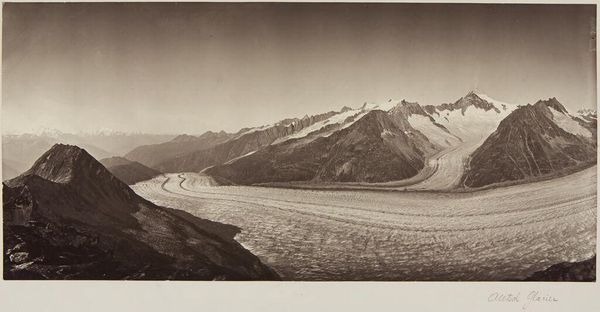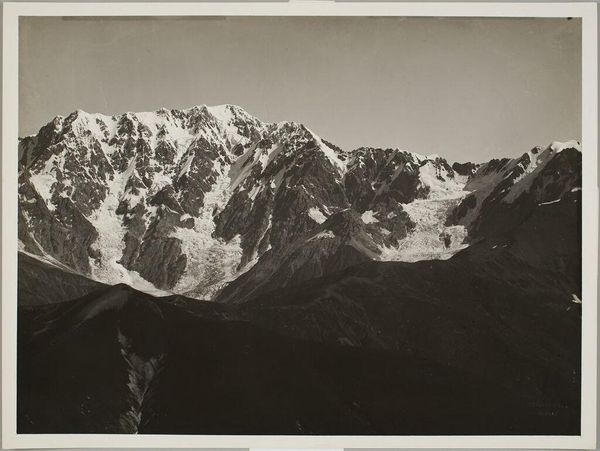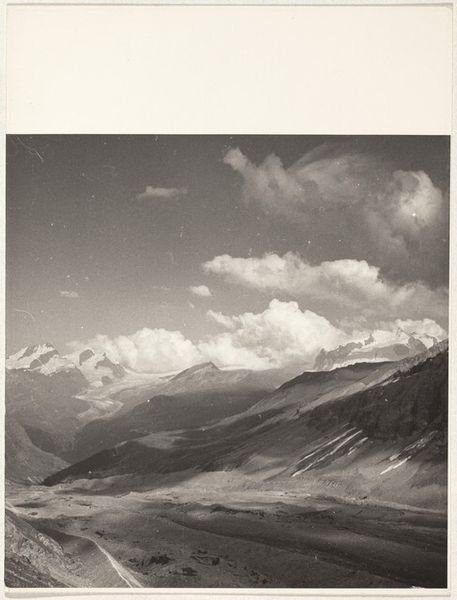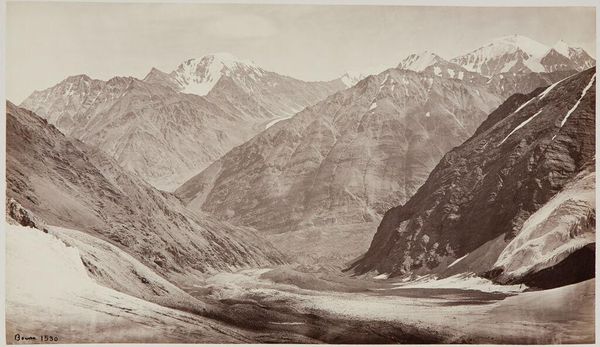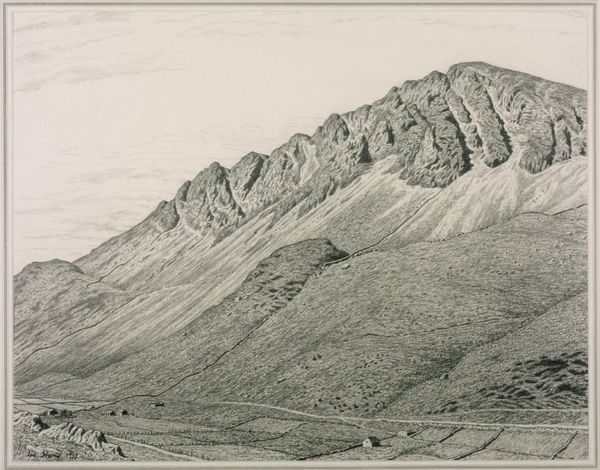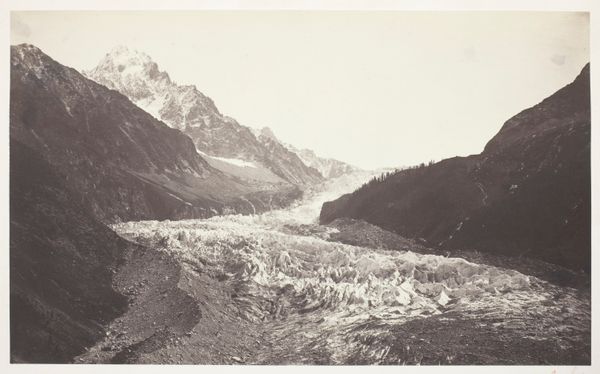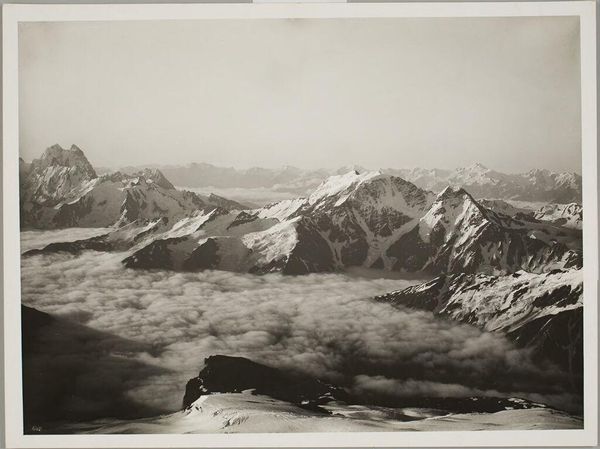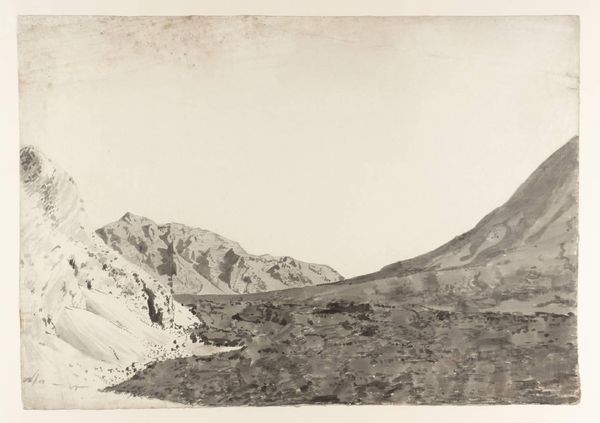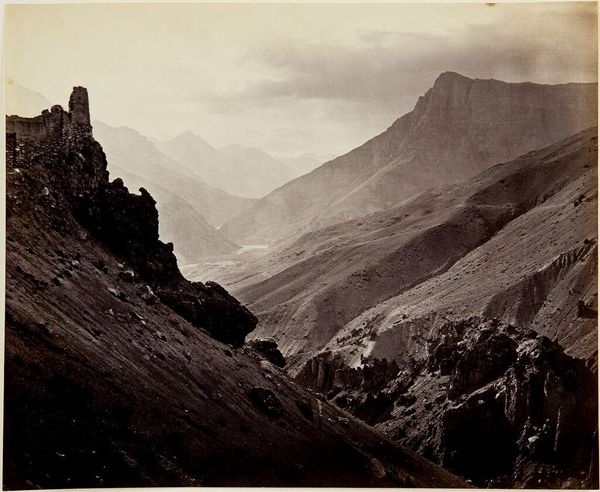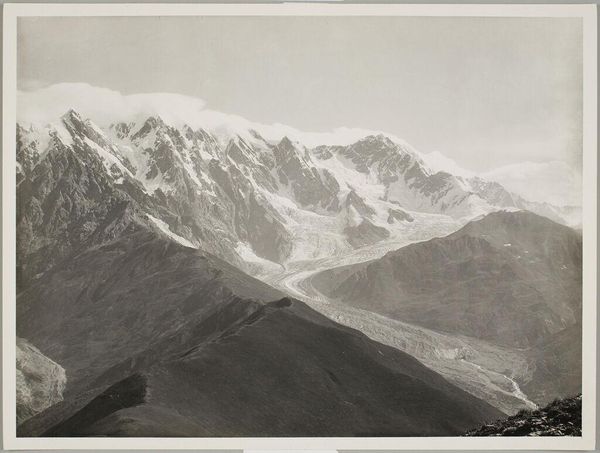
Dimensions: image: 18.75 x 31 cm (7 3/8 x 12 3/16 in.) mount: 46 x 56 cm (18 1/8 x 22 1/16 in.)
Copyright: CC0 1.0
Curator: Looking at this photograph, I immediately feel swallowed by the grandeur of the mountains; it's vast and overpowering. Editor: This is Samuel Bourne's photographic print, "Kulu, Spiti; The Manirung Pass, view from below," currently housed at the Harvard Art Museums. Bourne was a 19th-century British landscape photographer, and images like this reveal his fascination with the sublime, especially in the context of colonial India. Curator: Sublimity indeed! There's almost no human presence, just these layers and layers of peaks fading into the distance. It's like a visual echo of silence. I wonder what it was like to haul all the equipment needed for wet plate photography up there. Editor: It speaks to the Victorian era’s obsession with exploration and mapping, literally and figuratively, the unknown. The "view from below" is important here. It underscores the power dynamic; nature here is being surveyed, claimed, and possessed. Curator: Yes, but also maybe admired? I think he was trying to capture the spiritual awe of nature, a bit like the Romantic painters. Editor: And simultaneously contributing to an imperial project. It's a complex relationship, wouldn’t you agree? Curator: Absolutely. I suppose that's the beauty, and the struggle, of looking back. There's always more than one view. Editor: Precisely. It's this complexity that allows us to critically explore our own relationship with both art and nature today.
Comments
No comments
Be the first to comment and join the conversation on the ultimate creative platform.

